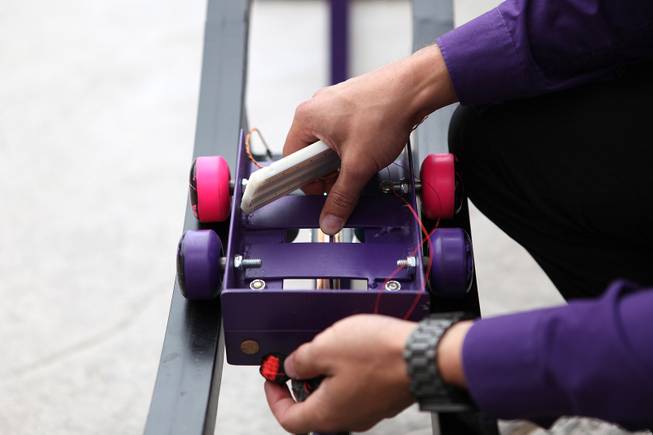
An energy efficient braking system for roller coasters using the induction process is demonstrated by senior entertainment engineering student Sean Greener, Jr. during the UNLV College of Engineering Senior Design Competition on Thursday, May 9, 2013 at the Cox Pavilion in Las Vegas.
Saturday, May 11, 2013 | 2 a.m.
Sun coverage
An iPhone application that recites cooking recipes, a mechanical device that turns the pages of sheet music and a self-folding stroller with automatic safety features were some of the inventions showcased at UNLV's engineering design competition this week.
To graduate, all Hughes College of Engineering seniors must design and build a prototype for a product with real-world applications.
Students use various engineering disciplines — civil, mechanical, electrical and entertainment — as well as computer science savvy to come up with their inventions over the course of a semester or a year. They are given about $1,000 in seed money to complete their projects, which must demonstrate some commercial and market potential.
Nearly 40 promising inventions were on display Wednesday at the Cox Pavilion. Judges from local engineering firms evaluated each project, and competition winners will be announced at a future awards ceremony.
Here are eight nifty inventions being developed by UNLV engineering students:
-
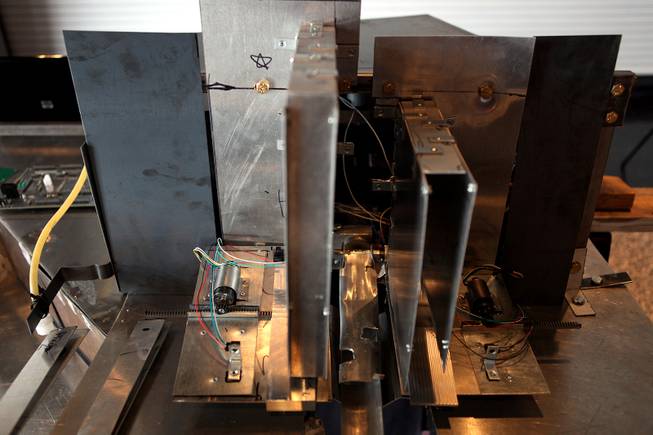
Silverware-Rolling Machine
Mechanical engineering students Kyle Ackley and Kyle Pointer designed a prototype for an automatic silverware-rolling machine.
The two UNLV students found that Las Vegas restaurants spend thousands of dollars to pay employees to roll silverware into napkins by hand. To help employees focus more on restaurant patrons and food preparation, Ackley and Pointer developed a machine that uses vacuums, metal arms and slots to roll silverware into napkins as fast as a human could (about 15 seconds per roll).
The machine would cost about $5,000 and would be made of steel and aluminum, according to the students. Kona Grill already has expressed some interest in the invention, pledging to purchase 23 machines if students are successful in its development, Pointer said.
-
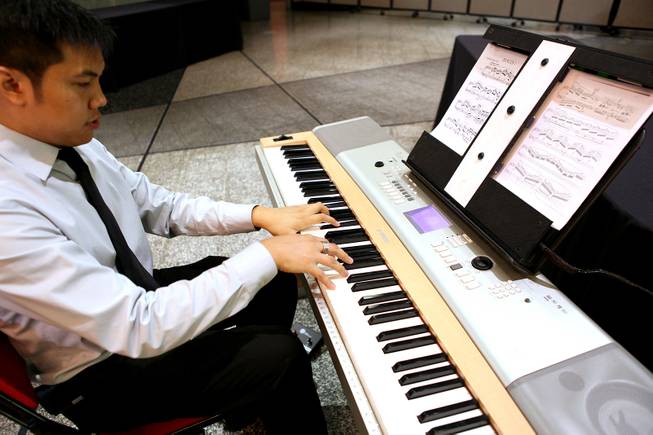
Music Page Assistant
Before he changed his major to entertainment engineering and design, Tim Lee was a jazz piano student in UNLV's fine arts program.
During his performances, Lee became frustrated by some of his page turners, fellow musicians tasked with turning pages of sheet music. While some of them were reliable, others turned the pages too quickly or slowly, causing piano players to make embarrassing mistakes.
That's why Lee developed a mechanical device that — with a push of a foot pedal — can turn a page forward or backward. The design took about two months to develop, and the machine can turn up to 20 pages of music.
The music page assistant might cost about $100 if it goes to market, Lee said.
-
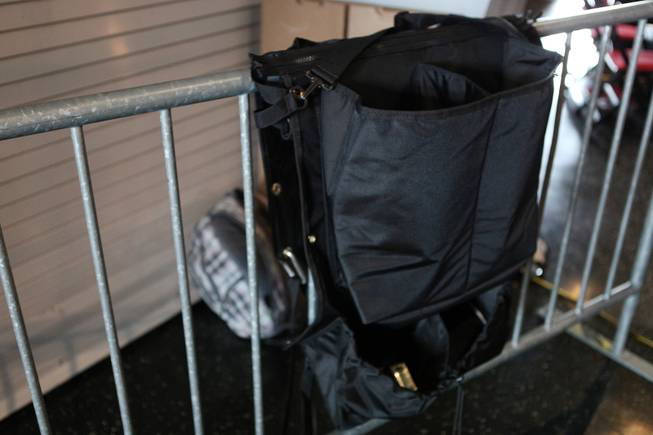
Camera Caddy
For celebrity photographers on the Las Vegas Strip, finding a place to set down their camera equipment during a red-carpet event can be tricky.
That's why entertainment engineering students Ashley Rogers and Kellilyn Monar developed a camera caddy, a special bag that can be placed over metal guardrails and hold several cameras, lenses, flashes, memory cards and water bottles in its deep pockets.
The product took a little more than six months to develop and would retail for about $600 if it goes to market, Rogers said.
-
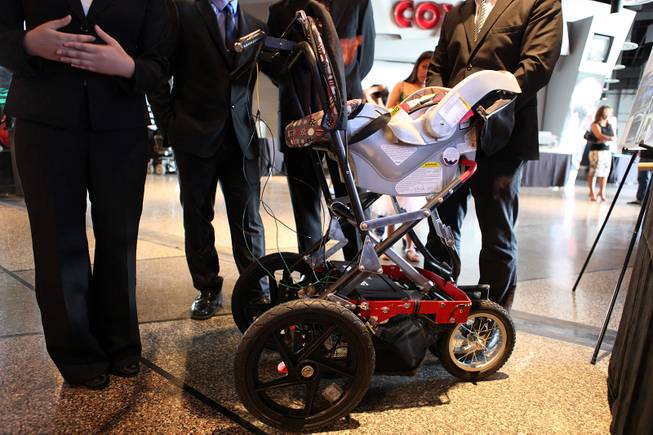
Self-folding Stroller
Engineering students Niloufar Afnani, Ronald Bohne, Khoa Vo and Brian Corpuz wanted to make strollers safer for kids. That's why the team developed a souped-up stroller with an automatic braking system and lights.
The stroller is designed so that whenever parents lift their hand off of the touch-sensitive handlebar, the wheel brakes automatically engage. A light-sensitive monitor engages the stroller's 48 LED lights if it gets too dark outside, maximizing visibility for oncoming traffic.
The stroller also has a hydraulic system, which enables it to fold itself up in under three seconds at the push of a button. The prototype is a bit heavy — about 32 pounds — but with better equipment and materials, the engineers hope to create a lighter stroller. There are plans to incorporate the design into wheelchairs, as well.
The stroller is estimated to cost about $350 if it goes to market.
-
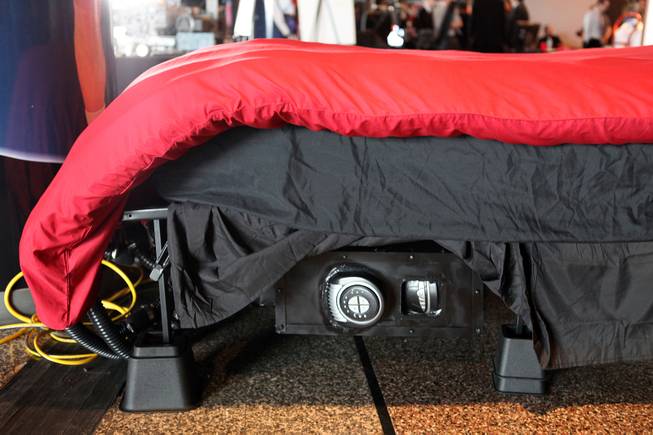
ThermoPod Blanket
Engineering students Ryan Schroeder, Calvin Wong and Patrick Arnold were frustrated with the big temperature swings that come with living in a desert climate: cool at night and hot during the day.
That's why the team developed a blanket that uses a special fan to pump heated or cooled air through it. Although there are electric heating blankets, there are no blankets on the market that both heat and cool a person, Schroeder said.
The team plans to market the device to individuals and hospitals. The blanket is expected to cost about $200 if it’s developed.
-
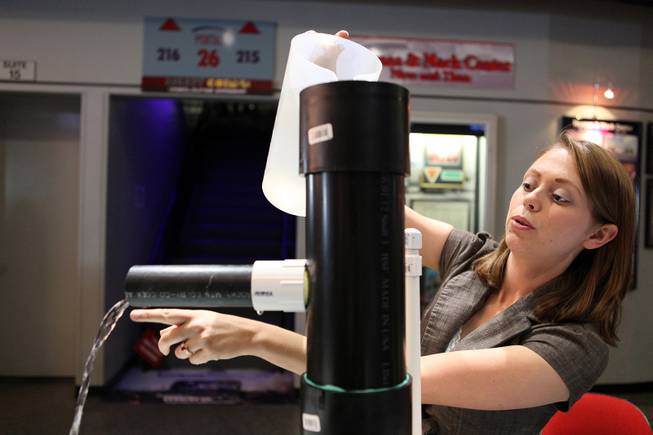
Clean water project
Every day, villagers in Moshi, Tanzania, travel 3 miles round trip to fetch clean water from a spring at the base of Mount Kilimanjaro.
Engineering students Annie Bouck, Christian Datuin, Eric Murphy and Brian Vincent set out to help these villagers build a freshwater pipeline and capture rainwater that falls in the area each year.
The team worked with the Virtua Foundation, a Christian nonprofit group, to develop a 1.6-mile water pipe and cleaning system for the village. In particular, the UNLV students worked with the Tuleeni Orphanage, which is currently under construction, to develop a rainwater collection system that could be placed on the boys' and girls' dormitory roofs.
Using PVC pipes and a ping pong ball, the engineers designed an $80 diverter that would collect rain runoff from the roof and separate it into clean drinking water or irrigation water.
Bouck said she planned on traveling to Tanzania this summer to help the villagers set up the system. The students estimate the rainwater collection project will help meet a third of the villagers' annual water needs.
-
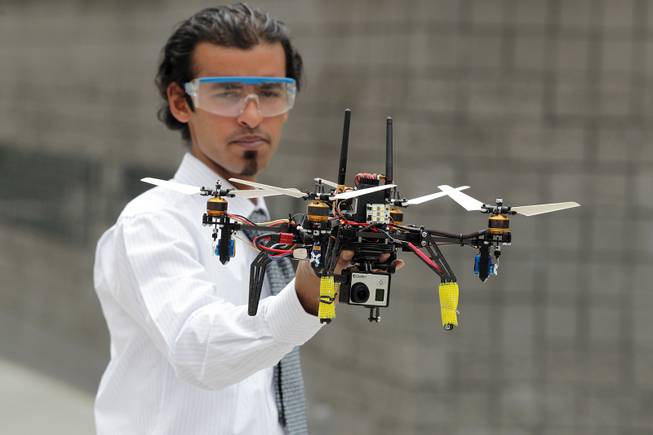
Flying drone
Unmanned Aerial Vehicles — or drones — are becoming a fast-growing industry. Developed initially for the military, these flying machines are quickly being adopted by civilians for commercial purposes.
Mechanical engineers Muhammad Ayub and Greg Friesmuth wanted to improve upon the current "quadrocopters" in the market. Many of these drones use standard propellers and an aluminum frame, which make them heavier and less precise in maneuvering.
That's why the team developed a lightweight drone using a carbon-fiber frame and special propellers that use articulating rotors that make the drone more stable in flight and allow it to fly inverted.
This 2.5-pound drone can be outfitted with cameras, GPS units and other gadgets so it can be used in a variety of situations, from police surveillance and wildlife tracking to sportscasting and pollution monitoring.
Each drone would cost about $1,800 if the idea goes to market.
-
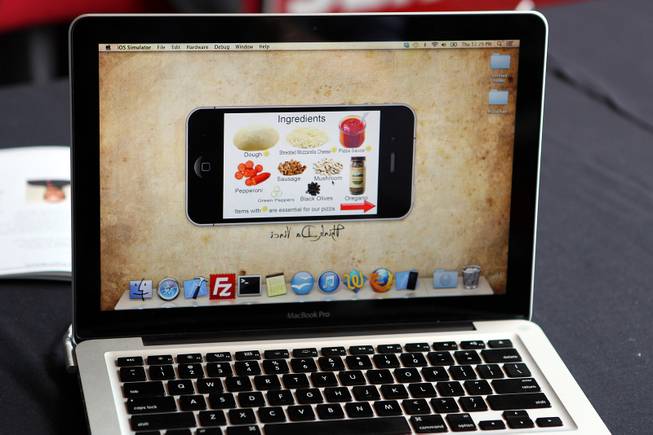
Pizza App
Computer science major Siavash Akrami is an avid cook who uses his iPhone regularly to look up new recipes.
However, Akrami worried about handling his iPhone while cooking. That's why he developed an iPhone app that verbally instructs the user to make pizza dough, prepare the sauce and toppings and bake it in the oven.
Akrami hopes to expand his application to other recipes. The app would be free in the Apple App Store and will generate money through referrals and advertisements for recipe ingredients.









Join the Discussion:
Check this out for a full explanation of our conversion to the LiveFyre commenting system and instructions on how to sign up for an account.
Full comments policy